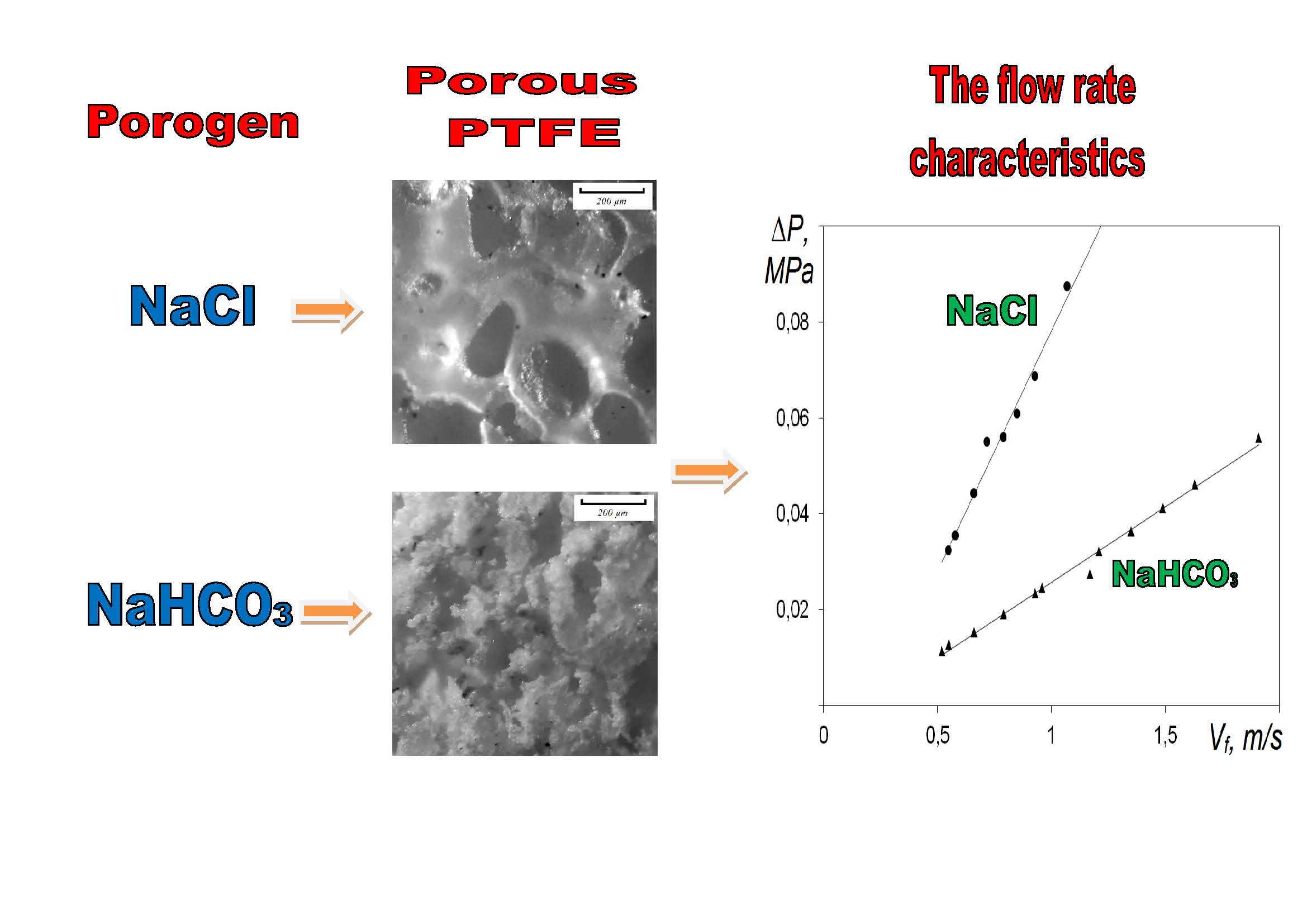Mon, Jan 6, 2025
[Archive]
Volume 17, Issue 2 (June 2020)
IJMSE 2020, 17(2): 73-79 |
Back to browse issues page
Download citation:
BibTeX | RIS | EndNote | Medlars | ProCite | Reference Manager | RefWorks
Send citation to:



BibTeX | RIS | EndNote | Medlars | ProCite | Reference Manager | RefWorks
Send citation to:
Kaliuzhnyi O, Platkov V. Formation of Porous Poly(tetrafluoroethylene) Using a Partially Gasified Porogen. IJMSE 2020; 17 (2) :73-79
URL: http://ijmse.iust.ac.ir/article-1-1643-en.html
URL: http://ijmse.iust.ac.ir/article-1-1643-en.html
Abstract: (12183 Views)
A method has been advanced to form porous poly(tetrafluoroethylene) (PTFE) using a partially gasified porogen. Sodium hydrogen carbonate (NaHCO3) was selected as a porogen. The standard technology of porous materials production including mixing, pressing, thermal treatment, porogen leaching and drying was employed.The formation of porous PTFE structures was investigated in a wide range of NaHCO3 concentrations. The mechanism for formation of such structures has been proposed. It is shown that the NaHCO3 porogen affords permeable porous structures with porosities down to 50% (cf. the lowest bound porosity of 70% attainable with the standard NaCl porogen).The flow rate characteristics of the pressure difference as a function of the air flow rate have been measured on porous PTFE samples formed using the partially gasified NaHCO3 porogen and the NaCl porogen. The obtained flow rate characteristics were linear, which suggests a laminar air flow in the pores. The permeability of the porous PTFE structures formed using the above porogens has been estimated.The use of the NaHCO3 porogen has allowed a five-fold cut of the leaching time, a more than three times enhancement of the permeability of the porous structures and an increase in the hydraulic pore diameter by a factor of 1.8 as compared to the corresponding data obtained with the NaCl porogen.
Keywords: Porous polymers, poly(tetrafluoroethylene), NaHCO3 porogen, NaCl porogen, porous structure, permeability
Type of Study: Research Paper |
Subject:
Ceramics
Send email to the article author
| Rights and permissions | |
 |
This work is licensed under a Creative Commons Attribution-NonCommercial 4.0 International License. |







